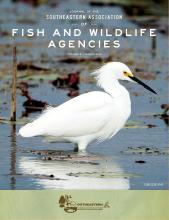Mallard Use of a Managed Public Hunting Area in Mississippi
Managers of public lands affording waterfowl hunting strive to provide quality hunting opportunities while supporting biological needs of birds during winter. Understanding responses by mallards (Anas platyrhynchos) to diurnal hunting activities would help shape hunt regimes that satisfy management goals. We examined use of a wildlife management area (WMA) in western Mississippi by 28 radio-marked female mallards when waterfowl hunting season was closed and during the season when none, half, or all of the WMA was hunted during two winters 2010-2012. The proportion of each day that mallards...
